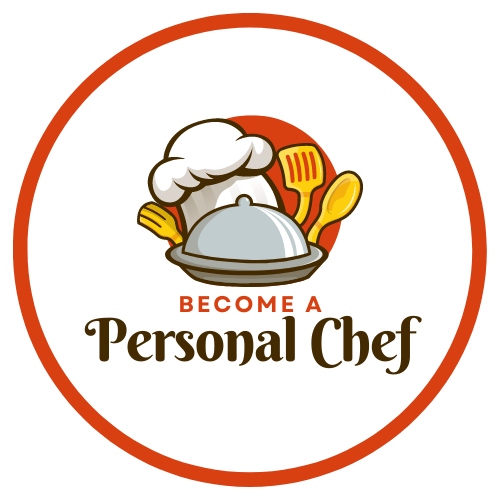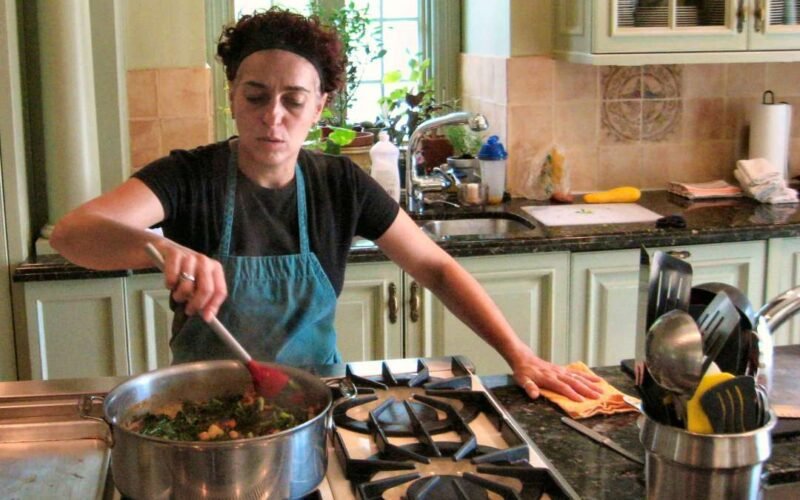Table of Contents
TogglePersonal Chef Uniforms
Have you ever wondered why personal chefs are always so well-dressed? It’s not just about looking good. A professional chef’s uniform plays a significant role in their job and can even affect the quality of their work. This blog post will delve into the importance of uniforms for personal chefs, breaking down the essentials, analyzing various clothing options, and providing tips on where to shop.
The Chef’s Wardrobe: Necessities and Importance
A uniform does more than identify a chef; it projects professionalism and creates a positive impression. It can also boost a chef’s confidence, making them feel more competent and ready to take on culinary challenges. This is where the importance of a well-crafted chef’s wardrobe comes into play.
The first and most important item in a chef’s wardrobe is the traditional white double-breasted jacket. It not only looks clean and crisp, but it also reflects light and heat away from the body, helping to keep the chef cool while working in a hot kitchen. The double-breasted design is also practical as it allows for quick changes in case of spills or stains.
Next on the list are pants, typically made of durable and breathable materials such as cotton or polycotton blends. These should be comfortable and allow for ease of movement while cooking. Chef pants often have an elastic waistband for added comfort and adjustable drawstrings for a perfect fit.
The Look
The traditional chef’s uniform includes a chef’s coat, pants, hat, and comfortable shoes1. The coat should be pristine white, symbolizing cleanliness. The pants are typically black or checked, and the hat keeps hair out of the food. These uniforms can be found in most professional kitchens, but at The Organic Personal Chef, we like to add a personal touch.
Our chefs wear sleek and modern aprons with our logo embroidered on the front. This adds a stylish and sophisticated element to their look while still maintaining professionalism. We believe that presentation is just as important as taste when it comes to food, and this philosophy extends to our appearance as well.
The aprons also serve a practical purpose. Made of durable and stain-resistant fabric, they protect our chef’s clothing from any spills or splatters that may occur during meal preparation. This ensures that our chefs always look fresh and put-together, even after a long day in the kitchen.
Logo Design
A well-designed logo on the uniform can make a lasting impression. It sets a chef apart from others and promotes brand recognition. A logo is a visual representation of your personal chef business and should be carefully thought out to reflect your brand’s identity.
When designing a logo, there are a few key elements to consider. The first is simplicity. A simple and clean logo will make it easier for customers to remember and recognize. This could be achieved through the use of bold fonts, minimal color palette, and uncomplicated graphics.
Next, you’ll want to pay attention to the colors used in your logo. Different colors evoke different emotions and can influence how people perceive your brand. For example, red often symbolizes passion or energy while blue conveys trustworthiness and professionalism. It’s important to choose colors that align with your brand’s values and message.
Another element to consider is the versatility of your logo. Your logo will be used across various platforms and mediums, so it’s important to ensure that it looks good in both small and large sizes. A versatile logo also means that it can be easily adapted for different purposes, such as social media icons or merchandise.
In addition to these elements, you’ll want to make sure your logo is unique and stands out from your competitors. It should communicate your brand’s identity and differentiate you from similar businesses in the market. This could be achieved through incorporating a personal touch or incorporating a clever play on words.
Lastly, remember that a logo is not just an image – it’s a representation of your brand and its values. Take the time to understand your target audience and what they resonate with. This will help you create a logo that speaks directly to them and creates an emotional connection.
Comfort
Comfort is key when it comes to chef’s uniforms. They should be made from breathable material, considering the hot kitchen environment. The fit should allow ease of movement since chefs are always on their feet. Chef jackets should have enough room in the shoulders and arms to accommodate frequent arm movements while cooking. Similarly, chef pants should be loose-fitting and have an elastic waistband for comfort during long hours spent working in the kitchen.
Durability
In addition to comfort, durability is also an important factor when choosing chef’s uniforms. Chefs are constantly exposed to heat, spills, and stains in the kitchen, so their uniforms need to be able to withstand these conditions. Look for materials that are stain-resistant and can handle high temperatures without shrinking or fading. Investing in high-quality uniforms may cost more upfront but will save money in the long run as they will last longer.
Professionalism
A chef’s uniform is a representation of who they are as a professional. It’s important to choose uniforms that convey a sense of professionalism and cleanliness. A clean, crisp uniform gives off an air of competence and expertise in the kitchen. Make sure to choose chef’s coats and pants in classic colors like white, black or gray.
Size and Fit
When it comes to sizing and fit, it’s essential to find uniforms that are not only comfortable but also flattering. Ill-fitting uniforms can be distracting and uncomfortable for chefs who need to focus on creating delicious meals. Be sure to check size charts before ordering or have employees try on different sizes to ensure the perfect fit.
The Great Chef Attire Debate: Balancing Hygiene, Safety, and Comfort in the Kitchen
As any seasoned chef knows, what you wear in the kitchen is as important as the ingredients you use in your dishes. The right attire ensures hygiene, safety, and comfort, but there’s always a bubbling debate about what constitutes the perfect chef ensemble.
The Sleeve Dilemma: Long vs. Short
Long sleeves are traditional, offering protection from hot oil splatters and steam burns. However, they can also be restrictive and warm in a heated kitchen. Short sleeves, on the other hand, offer more freedom and are cooler but leave arms vulnerable to kitchen hazards. The choice often depends on the kitchen environment and personal comfort level.
Chef Jackets vs. T-Shirts: Formal vs. Casual
Formal chef jackets exude professionalism and have practical features like reversible buttons and double-layered fabric for protection. Conversely, t-shirts, often imprinted with restaurant logos, are more comfortable and create a relaxed atmosphere. However, they lack the protective features of a chef jacket. High-end restaurants usually prefer formal attire, while casual dining spots may opt for t-shirts.
Choosing the Right Bottoms: Pants vs. Shorts
Long pants are the norm in most kitchens, protecting against spills and burns. But, in hot climates or less hazardous cooking environments, shorts could provide chefs with much-needed comfort. It’s essential to consider the risk factors in the specific kitchen before deciding.
Footwear: Steel-Tipped Shoes vs. Crocs
Steel-tipped shoes provide excellent protection against falling objects, while crocs offer comfort and slip resistance. Both have their merits depending on the nature of the kitchen work. In a heavy-duty kitchen, steel-tipped might be the safer option, whereas in a less hectic environment, crocs could suffice.
Headwear: Hairnets, Chef Hats, Baseball Caps, Headbands, or Bare?
From traditional chef hats that denote rank to hairnets that secure loose strands, headwear varies widely. Baseball caps and headbands can add a personal touch while still maintaining hygiene. In some kitchens, chefs may go bare-headed, though this is usually in less formal environments or where food preparation doesn’t involve high heat or open flames. The choice depends on the kitchen’s hygiene requirements and the chef’s personal style.
To Apron or Not to Apron?
Aprons are excellent for keeping clothes clean and carrying essential tools. However, some chefs find them cumbersome and prefer to work without them. Here, it’s a matter of personal preference and the nature of the work being done.
In conclusion, there’s no one-size-fits-all answer to what chefs should wear in the kitchen. It hinges on balancing hygiene and safety with comfort and personal preference. Each kitchen might have its unique considerations depending on the cooking style, environment, and brand image. As long as these factors are taken into account, chefs can stir up success in any attire!
Where to Shop?
You can find quality chef uniforms at specialty stores like Chef Works, Happy Chef, and Culinary Classics789. Online platforms like Amazon also offer a wide range of options.
Personal Chef Uniforms
A personal chef’s uniform is not just about aesthetics; it’s a tool of the trade. It safeguards chefs, promotes professionalism, and enhances performance. So, invest in a good-quality, comfortable uniform that reflects your style and commitment to your craft.
Here are some of my favorite tools for providing my personal chef service
As an experienced personal chef, I’ve found that the secret to creating mouthwatering dishes goes beyond just having a passion for food. It’s also about using the right kitchen tools. Today, I’m going to share with you my must-have kitchen items that help me bring my culinary creations to life.
1. Chef’s Knife
The first item on my list is a high-quality chef’s knife. It’s the most versatile tool in my kitchen, perfect for chopping, slicing, and dicing. My preference is for a Global Chef’s Knife, known for the edge and the way they are balanced.
2. Cast Iron Skillet
Next up is a good old cast-iron skillet. From searing steaks to baking cornbread, this pan does it all. I love the Lodge Cast Iron Skillet, which retains heat beautifully and adds a nice crust to anything you cook.
3. Stainless Steel Pots and Pans
A set of stainless steel pots and pans is essential for a variety of cooking techniques. They’re great for simmering, boiling, and sautéing. All-Clad’s Stainless Steel Cookware Set is my go-to choice for its exceptional performance and durability.
4. Immersion Blender
An immersion blender makes pureeing soups, making smoothies, and blending sauces a breeze. I suggest the Braun Multiquick Hand Blender, which is powerful, easy-to-clean, and highly versatile.
5. Digital Thermometer
To ensure perfectly cooked meats every time, a digital thermometer is a must. The ThermoPro TP19 Waterproof Digital Meat Thermometer provides speedy and accurate readings, ensuring your roast chicken or prime rib is cooked to perfection.
6. Silicone Spatula
A silicone spatula is a chef’s best friend for its versatility. It’s heat-resistant, non-stick, and perfect for everything from folding batter to stirring sauces. I recommend the OXO Good Grips Silicone Spatula.
7. Stand Mixer
Lastly, for avid bakers, a stand mixer is a game-changer. The KitchenAid Artisan Series 5-Qt. Stand Mixer isn’t just a pretty face; it makes mixing doughs and batters effortless.
These are the tools that I use daily in my personal chef service. Remember, quality tools make a difference, but they don’t have to break the bank. Start with the basics and add on as you grow more comfortable and adventurous in the kitchen.
Happy cooking!

